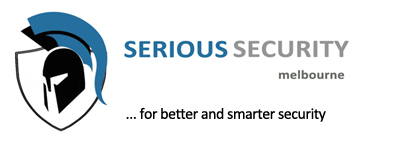The healthcare sector, responsible for the well-being of patients and the safeguarding of medical records, is a critical pillar of society. Maintaining security within healthcare facilities is not only a matter of patient safety but also a legal and ethical obligation. Electronic security systems have become an integral part of ensuring patient safety, protecting sensitive healthcare data, and securing medical facilities.
CCTV Surveillance: Monitoring the Healing Environment
CCTV (Closed-Circuit Television) surveillance forms the foundation of electronic security in healthcare. Surveillance cameras are strategically positioned throughout healthcare facilities, covering entrances, waiting areas, patient rooms, and critical zones like medication storage.
CCTV cameras serve multiple roles, acting as a visual deterrent to potential security threats and providing real-time monitoring. This surveillance allows healthcare staff to ensure patient safety, detect disturbances, and gather vital footage for incident investigation.
Real-Life Example: Hospital Ward Surveillance
Imagine a busy hospital ward. CCTV cameras are discreetly placed to monitor patient areas, nurses’ stations, and medication storage rooms. These cameras not only deter unauthorized access but also capture crucial footage in case of disturbances, ensuring a swift response to maintain patient safety.
Access Control Systems: Restricting Entry to Critical Areas
Access control systems are pivotal in healthcare for regulating entry to secure areas within medical facilities, including operating rooms, medication storage, and data centers. These systems often employ keycard readers, PIN codes, or biometric authentication to ensure that only authorized personnel can enter restricted zones.
Access control enhances security by preventing unauthorized access to valuable medical equipment, sensitive patient data, and critical areas. It also provides a digital record of who enters and exits secure zones, contributing to accountability and compliance.
Real-Life Example: Operating Room Security
In a bustling hospital, access control systems are utilized to restrict entry to operating rooms. Only authorized medical personnel with the necessary credentials can access these high-security areas, ensuring the safety of both patients and medical staff.
Alarm Systems: Immediate Response to Security Incidents
Alarm systems are indispensable in healthcare facilities. These systems are designed to provide immediate alerts in response to security breaches, unauthorized access, fire emergencies, or other critical incidents. They can be integrated with motion sensors, door contacts, and environmental sensors to trigger alarms.
The swift response facilitated by alarm systems allows hospital staff, security personnel, and first responders to address security incidents promptly, mitigating potential threats and protecting patients and medical property.
Real-Life Example: Emergency Response
At a large medical center, alarm systems are integrated with environmental sensors and intrusion detectors. If an unauthorized entry or environmental anomaly is detected, the alarm is activated, alerting staff and first responders for a rapid response, ensuring the safety and security of the healthcare environment.
Data Security: Safeguarding Patient Information
In addition to physical security, healthcare relies heavily on cybersecurity to protect patient records and sensitive medical information. This includes firewalls, intrusion detection systems, and encryption protocols to safeguard electronic health records (EHRs) and communication networks from cyber threats and unauthorized access.
Cybersecurity measures are vital in ensuring the confidentiality, integrity, and availability of patient data, protecting against data breaches, cyberattacks, and potential disruptions to healthcare services.
Real-Life Example: Electronic Health Records (EHR) Protection
In a modern healthcare facility, robust cybersecurity measures are implemented to protect electronic health records. These measures include advanced firewalls, intrusion detection systems, and encryption protocols for data transmission. This comprehensive approach ensures the confidentiality and integrity of patient records.
In conclusion, electronic security systems are integral in safeguarding the healthcare sector, ensuring patient safety, protecting sensitive medical data, and securing medical facilities. Whether it’s deterring unauthorized access, regulating entry to critical areas, facilitating rapid responses to security incidents, or safeguarding digital health records, these systems are the backbone of security within the healthcare industry.
